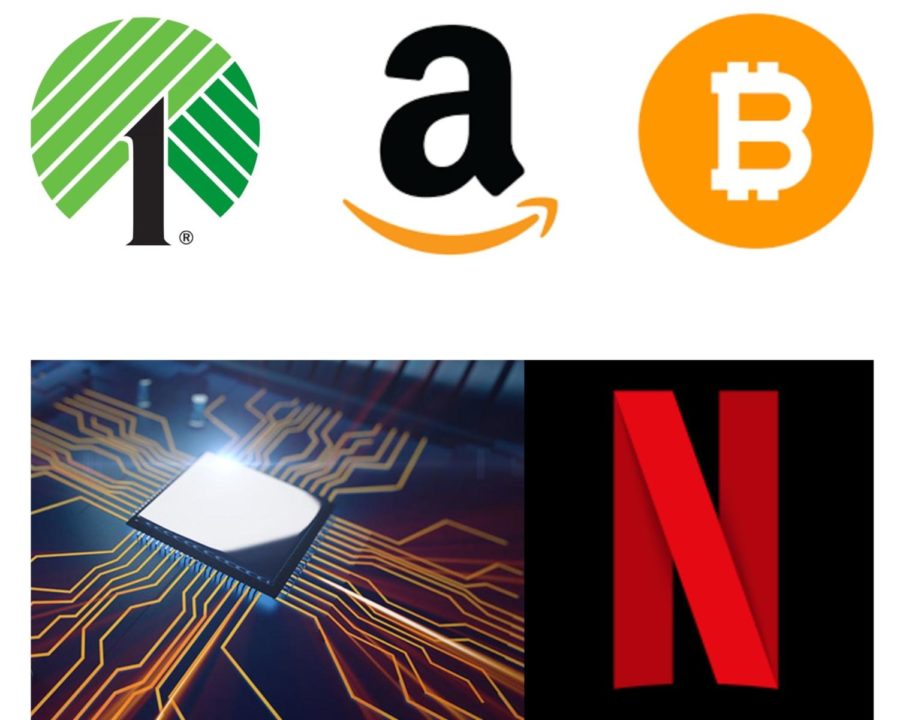This Week in Business (9/27): Dollar Tree faces the realities of inflation, Amazon sets up in our backyard, and more!
October 3, 2021
Dollar Tree prices exceed $1 due to rising retail costs
The “Dollar Tree” name has become a partial misnomer after the company announced it will begin selling items priced at $1.25 and $1.50 in addition to its namesake $1.00 offerings.
Until now, Dollar Tree has held steadfast in its commitment to keep its standard prices capped at $1.00 even as other discount stores such as Dollar General and Five Below regularly offer items on their shelves in the two to three dollar range.
According to the Bureau of Labor Statistics’ Consumer Price Index, the average cost of goods has risen 5.3% year over year as of Aug. 2021. This is likely due to worldwide labor and supply chain shortages which have driven up labor and shipping costs, respectively.
Investors and financial institutions are confident that increased prices may actually boost sales if Dollar Tree is able to diversify its store offerings with higher quality items as they normalize prices above the one dollar mark. Riding on this optimism, Dollar Tree Inc. shares (DLTR) appreciated 15.94% over the past week.
Amazon purchases 200,000 square feet of land in Pleasanton for new e-commerce warehouse
On Sept. 16, tech giant Amazon purchased 200,000 square feet of land across from the Shadow Cliff Regional Preserve in Pleasanton. According to the Alameda County Recorder’s Office, the company paid $75 million dollars for the land and plans on constructing a distribution warehouse for its retail business.
Such a warehouse would bring an estimated 375 jobs to the City of Pleasanton. The warehouse’s operation would also serve as an additional stream of tax revenue for the city.
The maximum wage for workers at an Amazon warehouse hovers around 21 dollars an hour, rendering most workers unable to afford local housing and rental prices. Most employees would have to commute from surrounding East Bay cities with more modest living prices such as Antioch and Concord, which could result in a slight uptick in morning traffic in the East Pleasanton area.
“I’m pleased Amazon’s coming forward,” Pleasanton Mayor Karla Brown told the Pleasanton Weekly. “I appreciate the new jobs, the potential revenue from having jobs and businesses in Pleasanton. I think that’s exciting.”
China’s historic ban on cryptocurrency
In a historic decision, on Sept. 24, 2021, the Peoples Bank of China decided to ban all crypto-related transactions in China.
So what does this mean for crypto holders in China? Even through foreign digital platforms, Chinese crypto holders would be unable to access or safeguard their crypto holdings.
A possible motive for the Chinese government to take such a sudden decision is the rising popularity of crypto and how it constantly reduces the value of a nation’s currency; in this scenario: the Chinese Yen.
Semiconductor shortage continues to disrupt the global supply chain
The reasons for the semiconductor shortage are multifarious. Renesas Electronics, a Chinese chip maker responsible for a sixth of the world’s chip production, had their factory catch on fire. This resulted in a lack of chip supply and many corporations who rely on chips in their products began hoarding whatever chips were still available. Inevitably, there was a big production delay.
The supply chain is clogged due to the semiconductor shortage, and experts say that conditions won’t return to normal until at least next year.
The automobile industry has been taking a huge hit, as there is not enough supply to match the demand for cars. As a result, used car prices have gone up 40% from the last year.
Netflix goes on the offensive in response to rising competition from Disney Plus
In historic lows, Netflix stock is only up 13% this year which is 1% lower than last year and far lower than its average. One big reason for this is because of its rising competition from Disney Plus, an alternative and cheaper streaming service owned by the Walt Disney Corporation.
Netflix took six years to reach 100 million subscribers, while Disney Plus took only 16 months to reach the same milestone. Another way to show Disney Plus’s rapid growth and Netflix’s struggle is by comparing their first year’s revenue. Disney Plus had a revenue of approximately $353 million in 2020, while Netflix in its first year had a revenue of only 75.91 million in 2000. This is even taking into account that Netflix is so established in the streaming industry.
Netflix is looking for new ways to expand, and in hopes of combating this competition, Netflix is planning to expand into the gaming sector.




